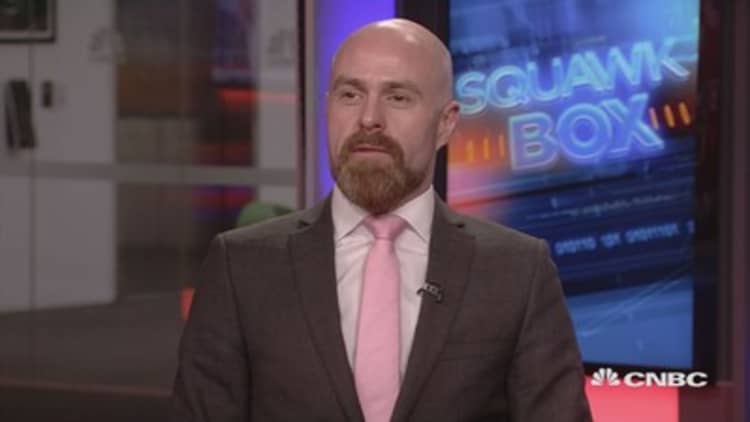The single currency is expected to strengthen over the foreseeable future as the European Central Bank (ECB) slows down its monetary stimulus, analysts told CNBC.
"We see more gains for the EUR ahead as the ECB paves the way for ending outright quantitative easing (QE) purchases later this year," Stephen Gallo, head of forex strategy at the Bank of Montreal, told CNBC via email.
The euro jumped nearly 0.8 percent against the U.S. dollar on Thursday following the release of minutes from the last meeting of the ECB. Analysts interpreted the comments as more hawkish than what President Mario Draghi had sounded back in December, and indicated that the ECB could look to change its guidance to the markets. Some investors are now making calls that the euro zone's central bank could end its massive bond-buying program by the end of next year, with a potential rate increase in the fourth quarter.
"The policy considerations contain so much discussion on the need for a gradual adjustment of communication that the ECB will most likely do so by the March meeting, assuming continued progress on inflation," Anatoli Annenkov, senior European economist at Societe Generale, said in a note on Thursday.

At the moment, the ECB's policy is to carry on purchasing 30 billion euros ($36.38 billion) worth of government bonds until September, with the caveat that it might expand it again, if needed. However, as the minutes showed, the central bank is confident that "the recovery has now moved into an expansionary phase" with growth picking up and inflation forecasts indicating a return to pre-crisis levels in the short-term.
"Given the ECB's track record of reacting only very gradually, we continue to see an end to QE in December and a first rate hike in June 2019, but the likelihood of an earlier normalization has logically increased," Annenkov added.
Analysts at Barclays sounded more bullish Thursday arguing that the ECB could end QE in September and move with a first hike of 20 basis points to its benchmark rate in the last quarter of 2018.
A tightening monetary policy is usually seen as positive for a currency as it's a sign of health in that region's economy and reduces that amount of that currency in circulation. However, there are other factors that are set to fuel the euro higher against the greenback. Apart from a growing European economy, there are less political risks on the horizon compared to the start of last year. On Friday morning, the euro was once again higher against the dollar because of a breakthrough in German coalition talks. The euro was 0.8 percent up trading at $1.2121 at about 10:45 a.m. London time.
Risks still remain
But a stronger euro is not always welcomed by the ECB as it might reduce the pace of European exports. However, Barclays noted Thursday that "provided that the euro does not appreciate sharply and quickly in the coming months, the governing council (of the ECB) is likely to downplay forex volatility going forward."
Meanwhile, Jane Foley, head of forex strategy at Rabobank, warned that some may be overplaying the rise that the euro could see this year.
"I do think that EUR/USD has further upside potential and that much of the drive this year will come from expectations regarding a less accommodative ECB. However, there is a lot of good news in the price already and therefore our end of year forecast is a relatively contained EUR/USD 1.24," she told CNBC.


